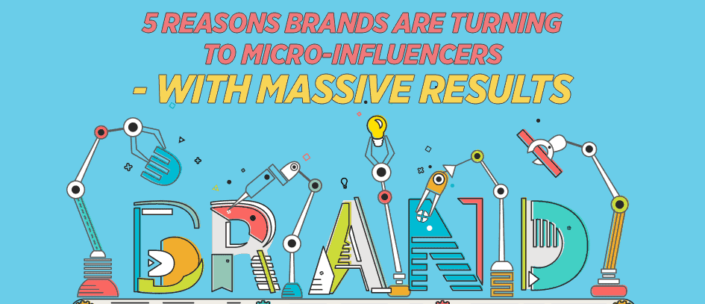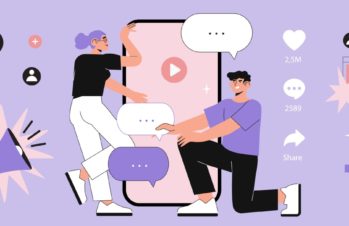Call it the next advance in the evolution of authenticity in marketing.
Instead of automatically turning to Instagram’s biggest celebrities to promote their products, major brands are beginning to enlist users with much smaller, but more loyal, followings for their influencer marketing needs.
According to some industry experts, these “micro-influencers” – social media users with fewer than 30,000 followers – are turning out to be a more effective choice for many brands looking to use the power of influencer marketing.
Here’s why.
Some consumers, especially in Generation Z, are growing wary of celebrity product endorsements.
Influencer marketing has been around long enough now that consumers know how it works. We’re wary of the idea that Khloe Kardashian actually uses Express Smile Atlanta’s teeth whitening kit, for example.
You know I love staying GLAM and @ExpressSmileAtlanta helps me keep my smile bright. If you want whiter teeth you should try it too. Tell them I sent you! ????Use code: KhloeSentMe Follow @ExpressSmileAtlanta #ad #NoYellowTeeth #Smile #TeethWhitening #TeethWhiteningKit
A post shared by Khloé (@khloekardashian) on
I mean, sure, maybe she does. But it’s a lot more likely that she just posted about it after receiving a huge check for the endorsement and free product. That knowledge diminishes the influencer power a bit, especially among Generation Z.
Now, it’s true that with tens of millions of followers each (Khloe has almost 68 million as of this writing), the Kardashians could post about garden fertilizer and it might very well be worth it for the brand. But few brands can pay the upwards of $200k price tag that a single Kardashian Instagram post goes for.
That means that for most brands, a post with that kind of reach just isn’t a possibility. So they’re faced with a different choice: find a traditional celebrity with a huge following (but not quite as huge as Khloe Kardashian’s), or opt for someone with far fewer followers, but potentially higher engagement levels.
While it will always be pretty cool to see a celebrity you idolize using a product that you could go out and buy, too, most of us are starting to trust those “regular people” a whole lot more. In fact, according to a 2015 Deep Focus report, 63% of Gen Z prefer advertising featuring “real people” over ads with celebrities.
It depends on your product and your audience, of course, but it’s worth considering whether an endorsement from a micro-influencer might go further for your brand than one from someone famous.
You can likely find a micro-influencer among the fans you already have.
Micro-influencers can be similar to brand advocates. These are regular people who already like and use your product or service, and whose praise of it will, therefore, be far more authentic than that of an influencer who isn’t already familiar with your product.
One of the great things about finding micro-influencers who already love your brand is that you don’t have to spend time developing a relationship from scratch. You should nurture and develop that relationship, certainly – but the basis for it already exists.
This can greatly shorten the timeline for getting a strong influencer campaign up and running.
Micro-influencers can be far more cost-effective.
Forget $200k for a single social media post. Posts from micro-influencers are much, much less expensive – in some cases, micro-influencers may be happy to post something in exchange for a free product.
Although costs vary, these are the general ranges for branded posts from micro-influencers, according to a Bloglovin’ Influence survey:
- Instagram: $250-$500
- Blog post: up to $1,000
- Facebook: $250-$500
- Twitter: $150-$200
Here’s the full graph of their results:
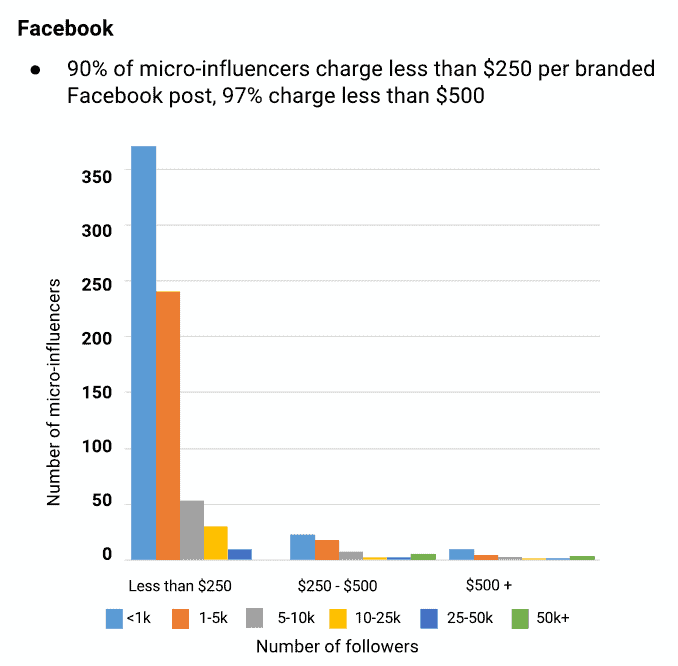
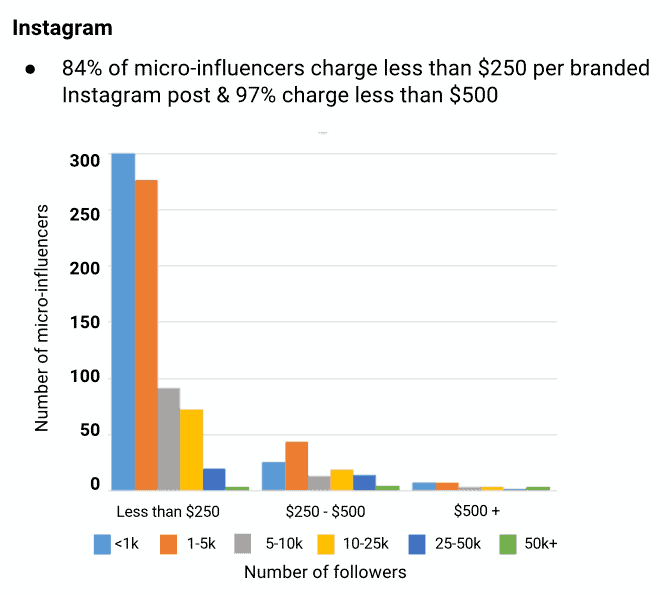
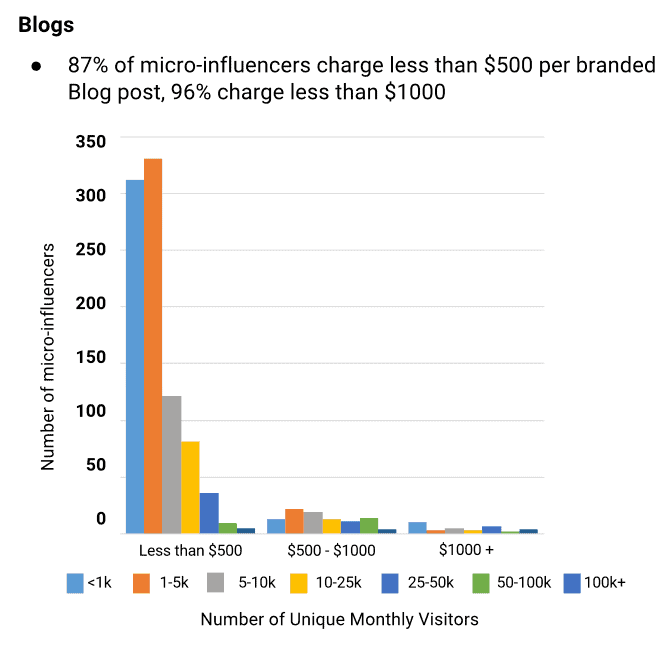
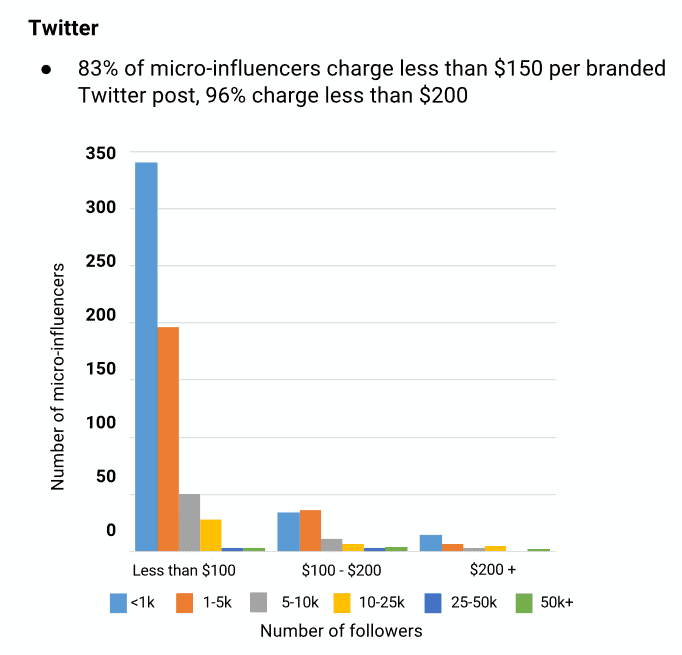
Source: Bloglovin’ Influence
These do not take into account the costs on the brand’s side as far as developing the campaign, sharing the post, etc. However, it’s easy to see that working with micro-influencers is a far more realistic route for most brands.
Micro-influencers elicit higher engagement.
One of the key advantages that micro-influencers offer to the brands that partner with them is higher engagement levels.
There are a few reasons for this.
One is that micro-influencers’ audiences are more finely targeted. They’re not trying to reach millions of people all over the world.
Instead, they’re aiming their posts at, say, Chicago foodies. Or moms in Toronto. Or women who love playing tennis. Micro-influencers are talented at developing their niches and then posting things that are relevant to that niche. This helps automatically up their engagement levels because a higher percentage of their followers are likely to be interested in whatever they post.
Another reason is that micro-influencers have more at stake when it comes to the brand partnerships they choose to enter into.
For a mega-influencer who gets hundreds of promotion requests a week and has millions of followers, there’s not much danger that the stream of requests will dry up or that their fans will leave them en masse after a post that misses the mark.
Micro-influencers can’t afford to make those mistakes, though. If they agree to a partnership with a brand that has no relevance to their followers, or if they drown their feed in posts that are blatant advertisements, their audience will go elsewhere without a backward glance.
The great micro-influencers, then, are going to vet their potential brand partnerships thoroughly. While that might mean that you have to work a little harder to find someone to say “yes” to your partnership offer, it also means that once you do find that person, you’re going to get better results than you would otherwise.
Finally, people simply trust micro-influencers more than they do huge celebrities. In fact, according to a study by Expertcity, 82% of users are “highly likely to follow a recommendation” from a micro-influencer. That’s a pretty incredible statistic.
Micro-influencers are much more likely to be posting their own content, engaging with their followers themselves, and making their own decisions about whether or not to partner with a brand.
Followers know this, which means that they’ll be a lot more willing to learn more about your product when they see your promoted post pop up in that micro-influencer’s feed.
It’s usually easier to develop a strong, long-term relationship with a micro-influencer.
Since micro-influencers work with fewer brands at a time, it’s usually much easier to develop a real, authentic relationship with them.
Your request isn’t one of a hundred that they get every week – it’s one of a few dozens, say, or fewer. They’ve got more time to spend discussing ideas with you and fewer distractions from the brand that are competing for their attention with bigger monetary offers, or flashier product offerings.
Then there’s the fact that micro-influencers are simply more accessible than the bigger-name influencers. They haven’t yet built up the layers of people between themselves and brands that celebrities and other major influencers have: publicists, agents, and the like.
So when you get in touch with a micro-influencer, there’s a very good chance that you’ll be talking to the influencer him- or herself.
In case you’re not yet convinced about the power of micro-influencers, take a look at this infographic from HelloSociety:
Want to learn more about making your influencer marketing as effective as possible? Read Approaching Influencers: The First Step to Influencer Marketing, Outreach, and Digital PR.

